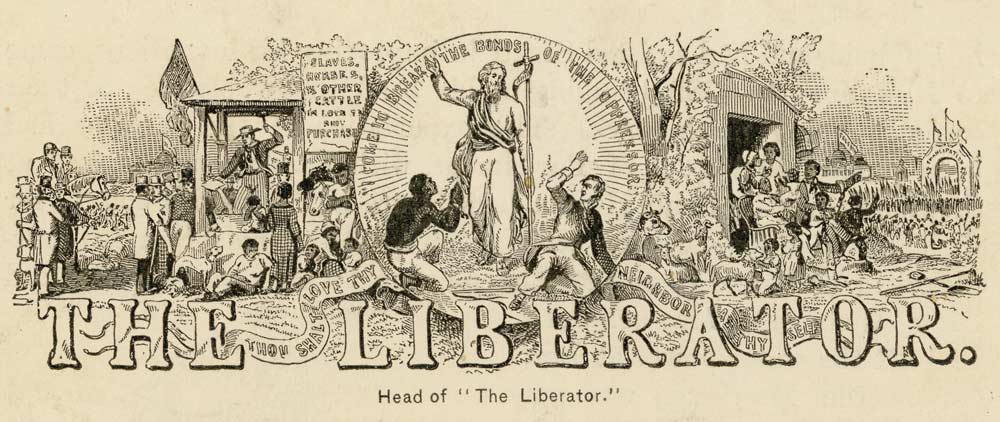
Is religion a source of moral progress in the world, or does it hold humankind back from achieving a more just society? In a recent column for the Los Angeles Times, Michael Shermer, the editor of Skeptic magazine and author of the recent book The Moral Arc: How Science and Reason Lead Humanity Toward Truth, Justice, and Freedom, answers this question by pointing to the moral progress made in recent times:
To what should we attribute this moral progress? Understandably, most people point to religion as the primary driver, given its long association with all matters moral. But the evidence shows that most of the moral development of the last several centuries has been the result of secular forces, and that the most important of these are reason and science, which emerged from the Enlightenment.
Ironically, however, Shermer’s argument draws on “myths” and “faulty knowledge,” the sorts of things he claims scientific reasoning dispels. In his column, Shermer appeals to historical untruths and simplifications, and more importantly appeals to an uncritical understanding of what “secularism” is. First, he equivocates on the meaning of “secularism.” Second, he ignores how secularism is a product of Western culture and history, instead presenting it as a universal human phenomenon; this ignores how the experience of secularism in non-Western cultures has been tied up with colonialism and imperialism, and is therefore morally ambiguous.
Shermer defines secularism as the jettisoning of “superstition and the supernatural” in favor of “the scientific worldview that holds that all effects have natural causes and that the world is governed by natural laws that can be discovered and understood.” He seems unaware of the scholarship that has been done on secularism in the past few decades that shows that secularization has been a much more complex and varied process.
For example, the sociologist José Casanova has shown that “secularization” in fact refers to three distinct processes: the functional differentiation of society into distinct spheres, each governed by its own laws, including the creation of the separate sphere of “religion”; the increasing loss of religious faith among the population; and the separation of religious authority from public authority, what we in the United States call the separation of church and state. Although these three phenomena are often conflated or thought to inevitably develop together, Casanova’s insight is that they are in fact distinct processes with no necessary relationship with each other. For example, he points out that several of the nations that have experienced the most dramatic decline in religious practice, such as the United Kingdom and the Scandinavian countries, also continue to support the religious establishment of particular churches. More importantly, Casanova also shows that there is no necessary connection between the functional differentiation of society and religious practice, since in many places throughout the world, including the United States, people continue to practice religion despite living thoroughly secular lives, in the sense meant here.
Further challenging Shermer’s perspective, both Casanova and the Canadian philosopher Charles Taylor, in his massive book A Secular Age, explain that secularism did not emerge, at least at first, as a reaction against Christianity, but rather as the development of beliefs intrinsic to Christianity itself. The Christian belief in a transcendent God who creates a world completely distinct from Godself made possible the belief that “the world is governed by natural laws that can be discovered and understood.” It was the internalization of this Christian belief that challenged the “magical” thinking that admittedly had been part of Christian practice in previous centuries.
Taylor goes on to argue that this change in worldview did contribute to the decline in religious practice that we often associate with secularization, but not in the way Shermer suggests; Taylor rejects what he calls the “subtraction theory” of secularization, that modern humanity continues on, minus the blinders of false religious beliefs. Rather, Western society has undergone a radical shift in its way of seeing the world, from a world in which the natural and the supernatural are barely distinguishable, to what he calls the “immanent frame,” in which, much as Shermer suggests, the everyday world is self-explanatory according to its own laws.
One of Taylor’s most important insights, however, is that this shift in worldview does not necessitate or logically entail the loss of religious faith; what it does do is render religious faith no longer a given, an obvious fact of life, but rather a matter of choice. The religious believer must choose to believe, in a world where such a choice is neither required nor obvious. Given this fact, it is not surprising that many people choose not to make religion a significant part of their lives. Taylor is also clear that although secularization does not mean the end of religion, it has led to a change in religion. In particular, Western religion has shifted from a focus on communal ritual to a focus on personal commitment. Taylor convincingly argues that this shift was beginning as early as the late Middle Ages, and took a decisive step with the Protestant Reformation and Catholic Counter-Reformation. But an important takeaway here is that, while secularization has contributed to the decline of religious practice in the West, it is by no means the opposite of religion and can co-exist with religion, even in the same person.
So given this more sophisticated understanding of secularism, let’s look at some of Shermer’s claims. In the quotation above, Shermer notes that scientific reasoning emerged in the Enlightenment. As historians of science have convincingly shown (here and here, for example), however, this is a myth; “modern” scientific method was well-developed during the Christian Middle Ages. It is certainly true that modern science has made several discoveries that have challenged traditional religious belief, but that is not at all the same thing as saying that scientific reasoning itself is opposed to religion. It is disappointing that, in making the case for evidence-based reasoning, Shermer ignores historical evidence in favor of a myth, the myth of the “Dark Ages.”
More importantly, Shermer makes no convincing case for why scientific reasoning is incompatible with religious belief. Certainly it is if we define religious belief as “superstition,” the denial of natural laws of cause and effect, but few religious believers would understand their own belief in that way. Indeed, as we have seen, the idea of natural laws arose in Western society out of the Christian belief in a transcendent God, which helps explain the emergence of scientific reasoning in the Middle Ages. There is no necessary incompatibility between scientific reasoning and a religious worldview, as evidenced by the fact that many important modern scientists, such as James Clerk Maxwell, Lord Kelvin, and the Catholic monk Gregor Mendel, were devoted Christians, as well as by Pope Francis’s recent affirmation of the theory of evolution and the Big Bang Theory.
Aside from scientific reasoning, Shermer also claims that the moral values that we today cherish are secular, and that it is adherence to these secular values that has improved our condition. For example, Shermer writes that:
As for slavery, the abolitionist movement was primarily inspired by such secular documents as the American Declaration of Independence and the French Declaration of the Rights of Man.
Unfortunately, Shermer here makes another historical blunder. In the United States, the abolitionist cause was taken up by the Quaker John Woolman and the evangelical Benjamin Rush (who later fought to require the teaching of the Bible in public schools), among many others, as an outgrowth of their Christian faith, long before the documents mentioned by Shermer written (1776 and 1789, respectively). In Great Britain, although William Wilberforce took up the abolitionist cause in the 1780s, it had far less to do with abstract principles than with his newly adopted evangelical faith.
Of course, the formal declaration of natural rights and the equality of all persons became an important inspiration for later abolitionists, but it is no less true that the abolitionist movement was deeply religious, and many of its leaders were church ministers. Shermer ignores this fact, but it again shows that the relationship between religion and secularism is more complex than a simple pairing of opposites. He is certainly right that secularism, using Casanova and Taylor’s explanation of it, has led to the development of moral values that have made the world a better place, but, as the example of anti-slavery abolitionism shows, it has often been religious people who have most ardently championed those values. The 1948 United Nations Universal Declaration of Human Rights is a more recent example of a set of secular moral values that have undoubtedly made the world a better place, but it is also true that the popes from John XXIII to Francis have heartily endorsed the declaration, often in the face of the UN’s own failure to live by its standards. Religious people understand the relationship between their faith and these secular moral values in different ways, which I cannot get into here, but the important point is that they do not see them as alien to or incompatible with their faith.
The final problem with Shermer’s argument is that it universalizes the Western experience of secularism, ignoring how secularism has been tied to colonialism and imperialism in the experience of many non-Western societies. As both Casanova and Taylor show, because it emerged out of Western Christian belief and the peculiarly Western struggle between church and state, secularism is a distinctively Western phenomenon. This is not to say that non-Western societies have not experienced secularism, but rather that their experience of secularism has come through contact with Western culture, which took place primarily through colonialism and imperialism.
Western secularism was not only imported to the rest of the world through imperialism, but itself developed in part through the imperial powers’ differentiation of themselves from the subjugated others. As Peter Van der Veer writes,
[T]he project of modernity, with all of its revolutionary ideas of nation, equality, citizenship, democracy, and rights, is developed not only in Atlantic interactions between the United States and Europe but also in interactions with Asian and African societies that are coming within the orbit of imperial expansion.
Notions such as “secular,” “religion,” and “separation of church and state” were in part developed and defined to distinguish the Western nations who exhibited the proper ordering of the secular and religious spheres from “backwards” nations who embodied a more “primitive” ordering. A worldview originating in the particular Western context was universalized and used to explain the inferiority of non-Western societies and justify their subjugation to the Western nations. The classic example is India under British imperial rule, where the British imported their own notion of “religion” as a separate, private, sphere into a society in which both Hindus and Muslims made no such distinction, and indeed both rejected the label of “religion” for their traditions; the limitation of the traditions that held authority over the lives of most Indians to a private sphere of belief then justified British rule over the public sphere.
Even as non-Western nations gained their independence, the ambiguous post-colonial legacy of secularism continued. As Richard Madsen shows, in Asian societies, post-independence governments adopted Western secular forms and in some cases actively sought to stamp out traditional religious practices. Non-Western societies in Asia, Africa, and the Middle East have also struggled with the disruptive effects of globalization and neoliberal economic policies on traditional ways of life. It is no coincidence that religious identities have often been tied to anti-Western resistance, as in radical Islam and Hindu nationalism.
Of course, non-Western societies have in some ways benefitted from secular values, such as improved technologies and secular values such as human rights. As I have said, the legacy of secularism outside the West is ambiguous, and as post-colonial scholars have pointed out, non-Western societies have engaged in a complex process of appropriating aspects of the culture imported by Western imperialism and blending them with their indigenous cultures. For example, even in pre-independence India, both Hindu and Muslim nationalists appropriated Western scientific knowledge and made use of British legal norms to make their case for independence. This blending process has also affected the practice of religion, as well; for example, both Van der Veer and Madsen point out, Asians are adopting more global forms of Islam and Christianity, and Buddhism has also undergone significant transformation. Casanova suggests that it is increasingly necessary to speak of secularisms rather than secularism, as different cultures adapt to secularism in distinct ways. It is worth stressing, however, that despite the encounter with secularism and despite growing access to scientific knowledge, unlike in the West, religious practice in non-Western societies is increasing (As Pippa Norris and Ronald Inglehart point out, this is largely due to population growth, not an increase in the already high rate of religious practice.). This reality clearly challenges Shermer’s simple opposition of religion and secularism.
The point of this post is not to argue that religion, as opposed to secularism, is the source of moral progress. As I have pointed out more than once, I share Shermer’s belief that science and secular values make the world a better place. Rather, it is to question the premise that we must choose between religion and secularism. Indeed, since the very idea of “religion” is a product of the secularizing process of differentiation, it is not clear what it would even mean for religion, and not secularism, to cause moral progress. The moral achievements of modern times are something that we as human beings can justly be proud of, but to better understand that progress, we need to keep in mind the complex ways that secularism and religion are intertwined, and also remember that the nations of the world have shared in that progress unequally.






Trackbacks/Pingbacks